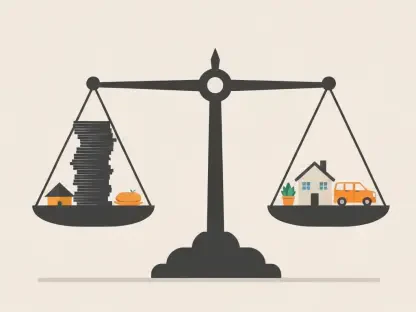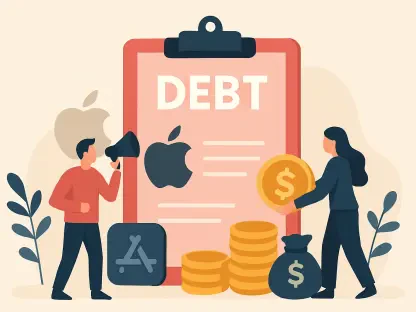Choosing the right checking account can significantly impact your financial well-being. With numerous options available, it’s essential to find an account that aligns with your needs, offering low fees and valuable features. This article delves into the top checking accounts of 2025, highlighting their benefits and potential drawbacks to help you make an informed decision.
Key Features of Top Checking Accounts
Low or No Overdraft Fees
One of the most critical features of a top checking account is the presence of low or no overdraft fees. Overdraft fees can quickly add up, making it essential to choose an account that either waives these fees or offers an overdraft forgiveness program. Many leading banks now provide options to link your checking account to a savings account or credit card to cover overdrafts, minimizing the risk of incurring hefty charges.
A growing trend among the best checking accounts involves allowing customers to set up alerts to notify them when their balance is running low, thus preventing unintended overdrafts. Additionally, some banks offer grace periods during which transactions that would otherwise cause an overdraft can be addressed without incurring a fee. These features demonstrate a consumer-first approach that helps account holders manage their funds more effectively and avoid unnecessary penalties.
Robust Remote Customer Service
In today’s digital age, having access to reliable remote customer service is crucial. The best checking accounts offer comprehensive online and mobile banking services, allowing you to manage your finances from anywhere. Look for accounts that provide 24/7 customer support through various channels, including phone, email, and live chat, ensuring you can get assistance whenever you need it.
Furthermore, many top checking accounts now come equipped with sophisticated mobile apps featuring user-friendly interfaces. These apps enable customers to monitor their accounts, make transfers, deposit checks, and pay bills, all from the convenience of their smartphones. Robust remote customer service also means that banks can quickly address issues, often resolving them without the customer needing to visit a branch, thus saving time and effort.
Requirements to Open a Checking Account
Basic Identification and Documentation
Opening a checking account typically requires basic identification and documentation. Most banks will ask for a valid government-issued photo ID, such as a driver’s license or passport, along with your date of birth, Social Security number, and contact details. Some banks may also require a minimum opening deposit, so be prepared to provide these details when applying for a new account.
Additionally, potential account holders should anticipate completing a brief application form that captures their financial history. Some institutions perform a soft credit check to ensure there are no substantial red flags in a customer’s financial past. This process is generally straightforward and aims to verify your identity while safeguarding the bank against potential fraud.
Minimum Opening Deposit
While many checking accounts have no minimum opening deposit requirement, some may necessitate a small initial deposit. This deposit can range from $25 to $100, depending on the bank and the type of account. Be sure to check the specific requirements of the account you’re interested in to avoid any surprises during the application process.
For those considering premium or high-yield checking accounts, the minimum deposit requirements might be higher, reflecting the additional features and services provided. It’s always prudent to review these requirements thoroughly, as starting with a clear understanding of all conditions can prevent any misunderstandings later. Such diligence ensures that you select an account that accurately fits your financial capacity and needs.
Factors to Consider When Choosing a Checking Account
Monthly Fees and Interest Rates
When selecting a checking account, it’s essential to consider the monthly fees and interest rates. Some accounts charge a monthly maintenance fee, which can be waived if you meet specific criteria, such as maintaining a minimum balance or setting up direct deposits. Additionally, while checking accounts typically offer lower interest rates than savings accounts, some high-yield checking accounts provide competitive rates, making them an attractive option for those looking to earn interest on their deposits.
Evaluating interest rates can be particularly crucial for those who maintain larger balances in their checking accounts. While not all checking accounts offer interest, those that do can add value by contributing to overall savings. Analyzing the cost-benefit of monthly fees against the potential interest earned is a strategic approach that can lead to choosing an account that maximizes financial returns while minimizing expenses.
Overdraft Policies and ATM Fees
Overdraft policies and ATM fees are other crucial factors to consider. Look for accounts that offer free ways to avoid overdrafts, such as linking to a savings account or credit card. Additionally, choose an account with a broad ATM network to minimize fees when withdrawing cash. Some banks even reimburse ATM fees charged by other institutions, providing added convenience and savings.
Considering ATM access is particularly relevant for individuals who frequently travel or live in areas with limited bank branches. Accounts that offer fee-free access to a wide network of ATMs ensure customers can withdraw cash without incurring additional costs. Moreover, the availability of ATM fee reimbursements can be a significant benefit, especially for those who rely heavily on cash transactions or find themselves using non-affiliated ATMs often.
Pros and Cons of Checking Accounts
Pros: Easy Access and Security
Checking accounts offer several advantages, including easy access to your money through mobile apps, debit cards, and check-writing facilities. They also provide security through FDIC insurance, protecting your deposits up to $250,000. Additional convenient services, such as bill pay and money transfers, make managing your finances more straightforward.
The simplicity and immediacy of accessing funds make checking accounts indispensable for everyday transactions. Whether paying bills online or making purchases with a debit card, the ease of use is unparalleled. The added layer of security through FDIC insurance means account holders can have peace of mind knowing their money is safeguarded against bank failures, a crucial aspect in maintaining financial health.
Cons: Lower Interest Rates and Potential Fees
Despite their benefits, checking accounts have some drawbacks. They typically offer lower interest rates than savings accounts and certificates of deposit, making them less attractive for those looking to grow their savings. Additionally, some accounts come with high fees, such as monthly maintenance, minimum balance fees, and overdraft fees, which can erode your balance over time.
It’s important to be aware of these potential drawbacks to make an informed decision. Lower interest rates mean that checking accounts are not typically the best tool for building significant savings. The imposition of various fees can also take a toll on maintaining a healthy balance, especially for those who don’t meet the required criteria to have fees waived. Understanding these cons helps in selecting an account that aligns well with one’s financial habits and goals.
Comparison of Standard and Best Checking Accounts
Standard Checking Accounts
Standard checking accounts often come with minimal interest and common fees, including maintenance, overdraft, and ATM fees. While they provide essential banking services, they may not offer the same level of benefits and features as top-tier accounts. It’s crucial to weigh the pros and cons of standard accounts to determine if they meet your needs.
Standard accounts are often chosen by individuals who prioritize basic banking needs over additional perks. They provide a reliable platform for everyday financial transactions but might fall short in offering rewards or innovative features. When evaluating these accounts, it’s essential to factor in how often you might incur fees and whether the basic services sufficiently meet your day-to-day financial requirements.
Best Checking Accounts
The best checking accounts stand out by offering no maintenance fees, free ways to avoid overdrafts, broad ATM networks without fees, and no foreign transaction fees. These accounts may also provide features like early direct deposit, Zelle transfers, and spending round-up programs, adding further value and convenience for account holders.
Top-tier checking accounts cater to those seeking more comprehensive financial management tools. They integrate advanced features designed to enhance user experience, such as automatic savings programs and budgeting tools. Additionally, perks like early access to direct deposits and seamless money transfers through platforms like Zelle offer practical benefits that streamline financial transactions. For frequent travelers, the absence of foreign transaction fees can result in considerable savings over time.
Finding the Best Checking Account
Evaluating Fees and Accessibility
To find the best checking account, start by evaluating the fees, branch and ATM accessibility, interest rates, and perks such as early access to direct deposits. Consider your banking habits and preferences, and choose an account that aligns with your needs. For those who prefer online banking, ensure the chosen institution has a suitable website and mobile app for remote deposits and account management.
Assessing the bank’s digital infrastructure is crucial for those who favor the convenience of managing finances remotely. Checking how user-friendly and secure the bank’s online platforms are can provide insight into your potential banking experience. Ensure the bank offers mobile apps equipped with essential features like mobile check deposit, real-time transaction tracking, and strong security protocols to protect your account from unauthorized access.
Digital Banking Services
Choosing the right checking account can have a significant impact on your financial health. With the multitude of options available, it’s crucial to select an account that aligns with your specific needs while offering low fees and beneficial features.
A checking account is more than just a place to store your money. The right account can save you money, provide convenience, and offer perks that help you manage your finances more effectively. This means looking for accounts with minimal fees, useful digital tools, and good customer service.
In 2025, several checking accounts stand out for their unique features and customer-friendly policies. Some accounts offer low or no fees, which can save you money over time. Others provide high-yield options that allow your balance to grow. Many come with advanced mobile banking features, making it easy to manage your money on the go.
However, not all checking accounts are created equal. Some may have hidden fees, limited ATM access, or poor customer service. It’s also important to consider whether the account offers overdraft protection or has minimum balance requirements.
This article will guide you through the top checking accounts of 2025, outlining their benefits and potential drawbacks, helping you to make an informed decision that suits your financial needs. By evaluating these key factors, you can find the perfect checking account that will enhance your financial well-being.









